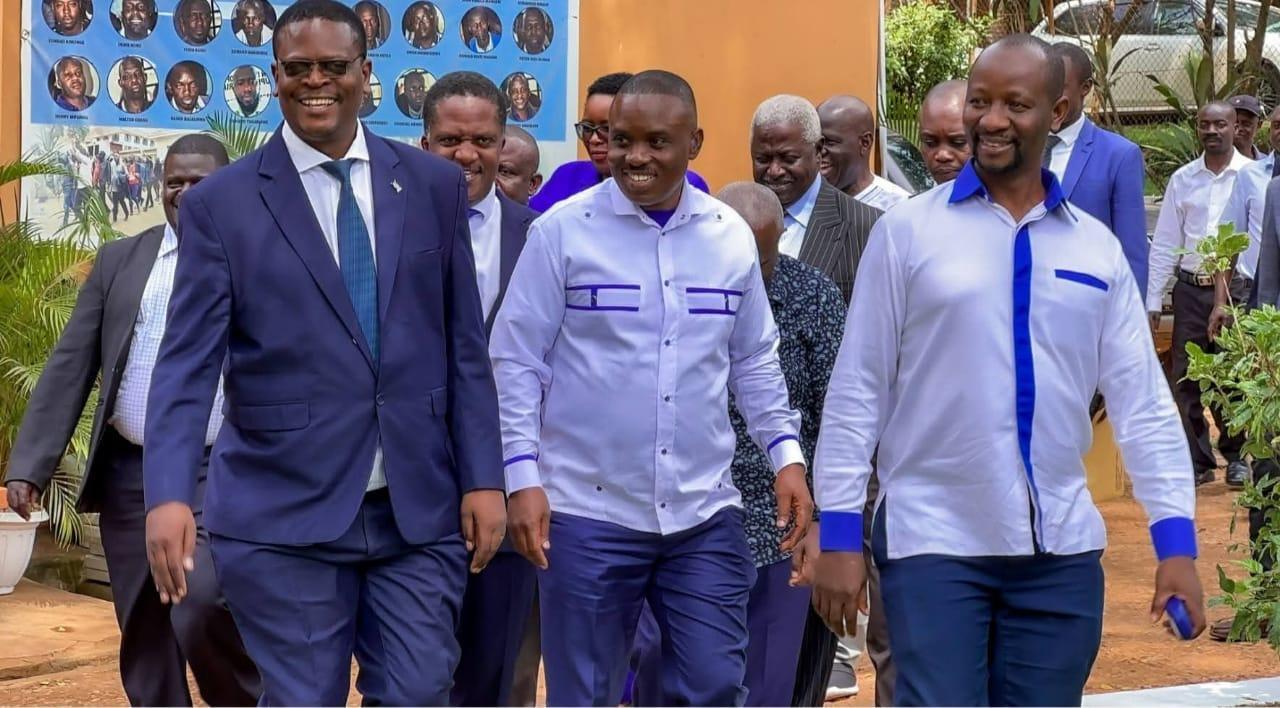Africa-Press – Uganda. Several Ugandans continue to raise questions about the leadership structure of the People’s Front for Freedom (PFF), with concerns emerging over the overlapping roles of some leaders and the party’s unconventional approach to power sharing.
The newly launched opposition political formation has adopted a three-tiered leadership structure that party officials say is designed to safeguard against internal power grabs and ensure more accountable governance.
According to party spokesperson and Secretary General Ibrahim Ssemujju Nganda, the arrangement is deliberate and informed by past failures within opposition political parties where individuals gained control of party structures, often leading to internal collapse.
“We asked ourselves—how do we safeguard PFF from being captured, because the person capturing political parties hasn’t stopped. He will seek to capture every serious political formation,” Ssemujju told.
PFF’s leadership is structured around three principal organs: The Council of Eminent Persons, headed by the jailed former presidential candidate Dr Kizza Besigye, serves an advisory and oversight role over the entire party.
The Assembly of the People, led by seasoned opposition politician Salaam Musumba, acts as the primary decision-making organ.
The Executive, chaired by Kampala Lord Mayor Erias Lukwago, is responsible for running the party’s day-to-day affairs.
Ssemujju explained that this structure is not only a strategic internal arrangement but also a reflection of how the PFF would govern if it came to power.
“We wanted our structure to mirror the kind of government we envision. That’s why we don’t have bloated positions. We have consolidated roles to promote efficiency and accountability,” he said.
The unique framework has sparked a mix of surprise and curiosity among political observers and members of the public, especially given that some individuals have been assigned multiple roles within the party.
Despite the questions, political analysts have generally welcomed the model, describing it as a thoughtful alternative to the dominant party structures in Uganda.
“This is a promising model—not just for winning elections but for Uganda’s political future,” said political analyst Rogers Barigayomwe.
“It’s a good sign to the ruling NRM; it shows what a well-structured party looks like.”
However, the arrangement has not gone without cautionary advice. Critics warn that unless carefully managed, the overlapping of roles could create conflict or lead to confusion within the party’s organs.
“They need to ensure a clear separation of responsibilities across the different organs,” said Sadan Gayira, acting chairperson of the People’s Progressive Party.
“If roles are well defined and respected, the structure has potential.”
For now, all current office bearers remain in acting capacity. The party has set a two-year transitional period, after which the Assembly of the People will elect new leaders to formally occupy the various roles.
For More News And Analysis About Uganda Follow Africa-Press






